




What are Machines?
With the advancements in technology, machines are no longer just for adults - today, kids are using them on a daily basis. Kids have their own "machines" that help out with everything from homework to playing games - and these machines have made the process easier for kids! So, let’s know what are machines. A machine is a physical device that actively performs work. A machine uses power but isn't necessarily electrical. For example, machines can be powered by wind, water, thermal, chemical or human power.
Machines are quite literally designed to help us and, for example, allow us to complete tasks more efficiently and quickly. Machines do not only save our time; they also improve the quality of our work. In this article, we will be discussing how do machines help us in our daily lives and their different types.
Different Types of Machines for Kids
Machines are mainly categorised into three parts. They are as follows:
Simple Machines
Compound Machines
Complex Machines
Simple Machines
Assume you are a caveman living on this planet thousands of years ago. There is no technological advancement. There are no modern conveniences. In reality, there are few to no inventions at all. Today you have a task: you must retrieve something that has become entrapped behind a large boulder. The boulder is so heavy that moving it on your own is tough. Except for a stick, there is nothing to assist you. How would you react? The simplest solution would be to place the stick beneath the rock, push down on the end of the stick to shift the boulder, and recover the trapped object. Some scientists believe that this is how simple machines began.
Simple machines for kids are those with few or no moving parts. They, like the stick, utilise energy to work with a single movement. Work is the amount of energy required to move an object across a distance. You are performing work when you pull, push, or move something. The more you push, pull, or move an object, the more work is required. Below are some of the simple machines examples.
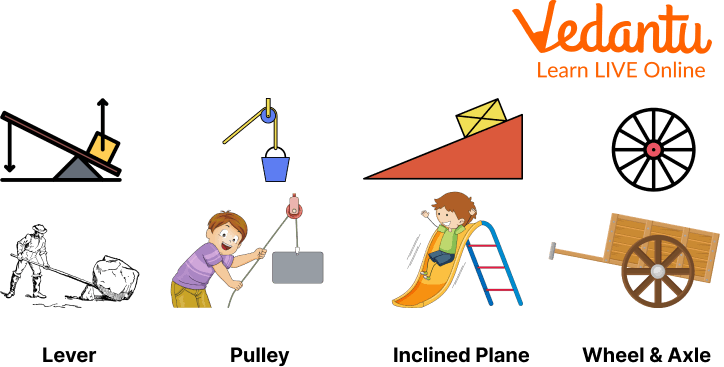
Simple Machines
Let’s See How Do Machines Help Us:
Lever: A lever is used to lift weights, cut things and open lids. Scissors and bottle-openers are examples of levers. A small child lifts a heavier child on a see-saw which is also a type of lever.
Pulley: A pulley is made from a wheel and a rope. It is used to lift things easily. For an example: Villagers use pulleys to draw water from wells. As from the below image it can be seen that a boy is pulling out water from the well by using pulley.

Use of Pulley in Daily Life
Wheel and Axle: A wheel-and-axle arrangement is made up of two circular objects of different sizes. The wheel is the larger object. It rotates around the smaller circular object called the axle. A steering wheel, a bicycle pedal and a screwdriver are some examples of wheel and axle. A steering wheel, a bicycle pedal and a screwdriver are some examples of wheel and axle. Bicycles, car tires, Ferris wheels, analogue clocks, electric fans, pizza cutters, windmills, drills, water wheels and door knobs are the simple axle and wheel machines that we use in daily life.
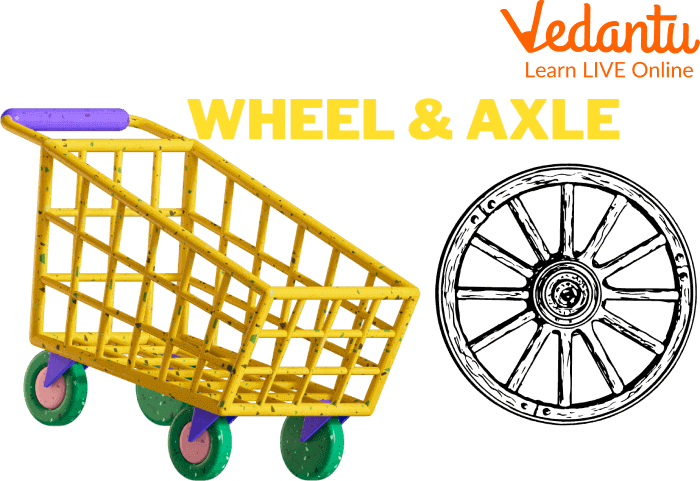
Wheel and Axle
Inclined Plane: An inclined plane is simply a slope over which a load can be pushed up or down. A plank of wood is often used to load heavy barrels onto trucks.
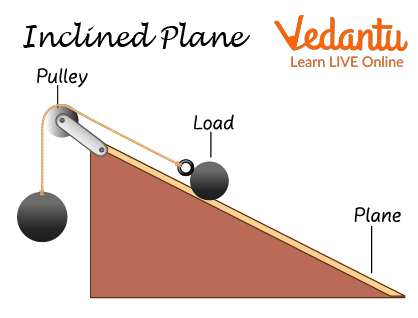
Inclined Plane
Compound Machines
Compound machines can be created by combining simple machines. Compound machines can range in size from a mechanical watch to a Wheelbarrow.
Following are the compound machine examples: Wheelbarrow, Pencil Sharpner, Clippers. To understand the examples of compound machines more clearly let’s see the below diagram.
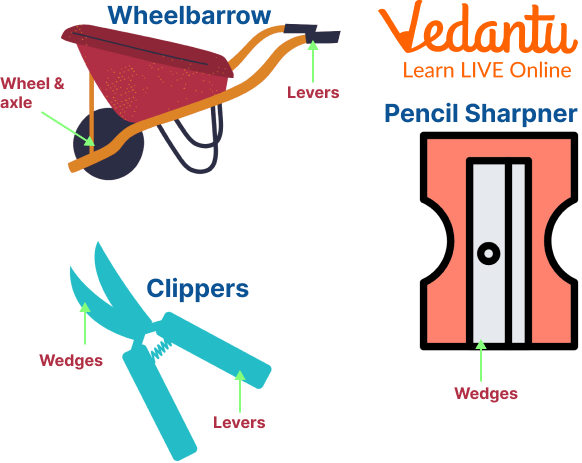
Examples of Compound Machines
Here, we can see that a wheelbarrow has more than one functionality in it. Similarly, clippers and pencil sharpener all of these have the combination of simple machines functionality.
Complex Machines
Combining simple and compound machines yields complex machines. They might be as small as a car or as massive as a construction crane. A complex machine is formed by the combination of two or more simple and compound machines. Compound machines are capable of doing more challenging tasks than simple machines alone.
Complex machines include bicycles, cranes, escalators, and so on. In the below complex machines images, we can see that each of the machines have more than 2 functionality. And that’s why it comes under the category of complex machines.
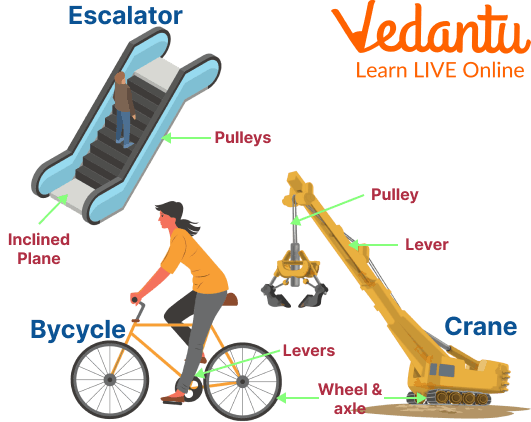
Complex Machines
Why do We Use Machines?
Following are the reasons we use machines:
Machines are utilised in a variety of industries to perform jobs that would take a human significantly longer to complete. Recent breakthroughs in automation and robotics have enabled large factories to be run entirely by automated machinery, with no human labour required.
Machines help us accomplish our jobs better as machines can often assist humans and we can collaborate with machines to complete things more quickly. Lawn mowing equipment, for example, can assist us trim lawn grass faster than we can manually.
Machines help to minimize work as machines allow us to work with less effort than we did previously. For e.g., farming equipment like the tractor and the harvester reduces the manual labour done by the farmers very significantly.
Summary
Machines are an essential part of our lives and play a vital role in the things we do every day. We use machines for everything from cooking food to filling up our gas tanks, and it is no surprise that these devices can be quite complex. In this article, we had discussed the different types of machines and also seen their examples. Finally, we explored the benefits of using machines and why they are such an important part of our everyday lives.
FAQs on Machines for Kids
1. Name any two compound machines.
A shovel, which is a tool composed of a wedge and a lever; a wheelbarrow, which is a tool composed of levers, including planes, screws, and wheels and axels; and a bicycle, which is a vehicle composed of wheels and axels, pulleys, screws, levers, and included planes.
2. What is the most simple machine?
The six most popular simple machines are inclined planes, wedges, screws, levers, pulleys, and wheel-and-axles, which are meant to vary the magnitude/direction of the force (remember, work = force x distance), making the task easier to complete.
3. What are some simple machines you use at home?
Here are some of the most popular areas in the home to find simple machines:
Pulley: blinds, garage doors, flag poles.
Lever: see saw, pry bar, lever action door latches.
Wedge: scissors, screw, a knife.
Wheel and Axle: office chairs, carts, wheeled carry-on luggage and toy cars.









